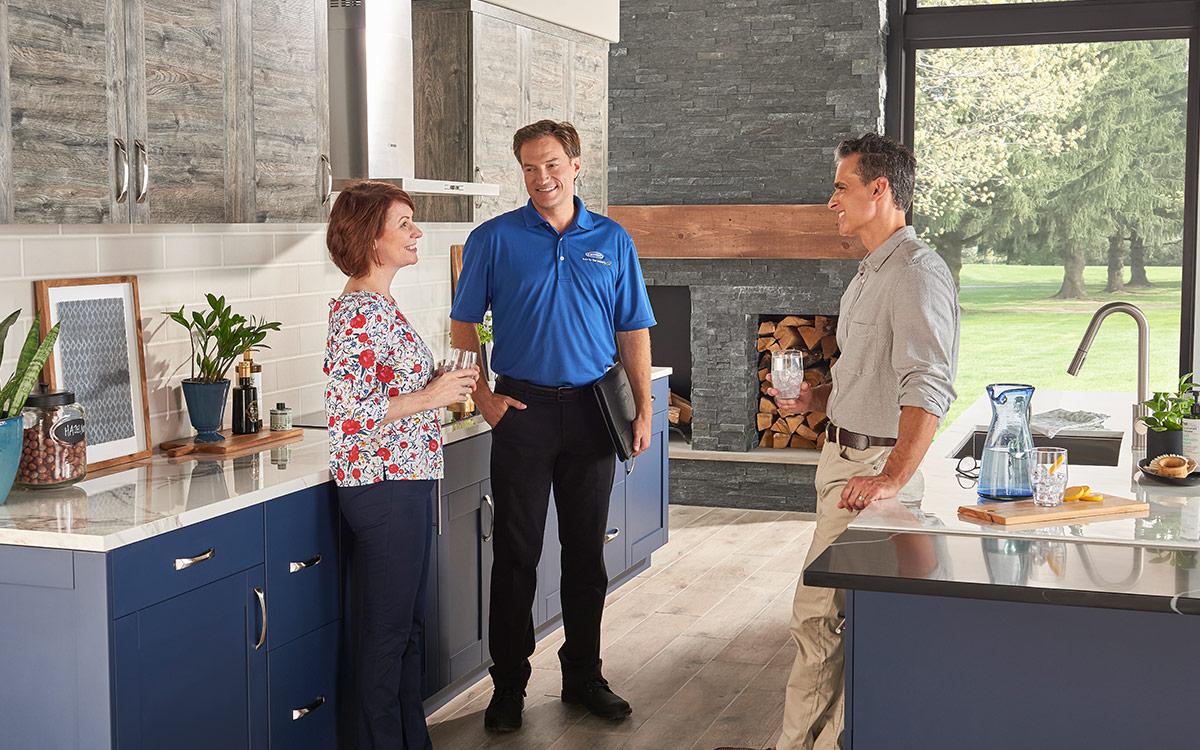
When summer heat kicks in, there’s nothing better than walking into a cool, comfortable home.
But that comfort can come at a price—especially if you’re using an older or inefficient air conditioning system. With electricity prices on the rise and growing concern over environmental impact, making smart, energy-conscious choices for your cooling system is more important than ever.
This guide breaks down everything you need to know to make better decisions about energy-efficient air conditioning in your home—from choosing the right unit to using it in a way that saves you money and reduces your carbon footprint.
Why Energy Efficiency Matters in Air Conditioning
Cooling your home takes a lot of energy. In fact, air conditioning accounts for about 12% of total energy use in U.S. homes each year, according to the Department of Energy. When your system is inefficient, not only does your utility bill spike, but your household contributes more to greenhouse gas emissions, which drive climate change.
By switching to energy-efficient air conditioning, homeowners can reduce their power bills, depending on the system and how it’s used. And it’s not just about the numbers—energy-efficient systems tend to cool more evenly and quietly, improving comfort across your home. Plus, in many states, there are incentives, rebates, and tax credits available that can help offset the cost of a new, high-efficiency unit.
How to Choose an Energy-Efficient Air Conditioner
First, consider the type of system that fits your space. Central air conditioning is great for whole-house cooling but comes with a higher upfront cost. Ductless mini-splits offer excellent efficiency and are ideal for homes without existing ductwork. Window units and portable ACs are more affordable, but they typically don’t match the efficiency or coverage of permanent systems.
Look at the Seasonal Energy Efficiency Ratio (SEER) when comparing systems. The higher the SEER rating, the more energy-efficient the unit is. In the U.S., federal standards require new central AC units to have a SEER of at least 14 in most states and 15 in the South and Southwest. Units with ENERGY STAR® certification meet or exceed these standards.
You’ll also want to look for inverter technology, which allows the system to adjust its cooling power based on the room’s needs rather than constantly turning on and off. This smooth operation significantly cuts down on energy usage.
And don’t forget sizing—a unit that’s too big will cool your home too quickly without dehumidifying properly, while an undersized unit will run constantly. A professional HVAC installer can perform a load calculation to determine the best size for your space.
Smart Features That Maximize Efficiency
The latest AC systems come packed with smart features that help you save without sacrificing comfort. Programmable thermostats allow you to set cooling schedules that match your lifestyle. For example, you can raise the temperature while you’re at work and cool the house down before you get home.
Zoned cooling systems, often used in ducted or mini-split systems, let you control the temperature in different areas of the house individually, so you’re not wasting energy cooling empty rooms.
If your system supports it, Wi-Fi connectivity and smart home integration mean you can adjust your thermostat remotely using your phone or smart speaker. And many units now offer eco or energy-saving modes that optimize performance while minimizing energy use.
Best Practices for Using Your AC Efficiently
Getting the most from your energy-efficient air conditioning system is all about how you use it. Set your thermostat to around 76–78°F when you’re home and raise it a few degrees when you’re out. Each degree higher in summer can save about 3% on cooling costs.
Make sure to keep windows and doors closed while the AC is running, and use ceiling fans to help circulate air—this makes the room feel cooler without actually lowering the temperature.
Closing blinds or curtains during the day, especially on sun-facing windows, reduces heat gain and helps maintain cooler indoor temps. Keeping heat out means your AC doesn’t have to work as hard.
Tips for Maintaining Efficiency Over Time
Even the most efficient air conditioning systems lose performance if they’re not maintained. Schedule professional servicing at least once a year to check refrigerant levels, inspect components, and ensure everything is running smoothly before the summer heat arrives.
Change or clean your air filters every 1–3 months, depending on usage and air quality. Dirty filters restrict airflow, forcing your system to work harder. Also, make sure your outdoor condenser unit is free from leaves, dirt, and debris that can block airflow and reduce performance.
Home Improvements That Boost AC Efficiency
There’s a lot you can do beyond the AC unit itself to make your home more efficient. Proper insulation in walls, ceilings, and attics helps maintain indoor temperatures. Sealing air leaks around windows, doors, and ductwork also keeps cool air in and hot air out.
Consider installing window films or upgrading to energy-efficient windows to reduce heat gain. Landscaping can help too—planting shade trees around your home can naturally cool it down, reducing the burden on your AC system.
Energy-Efficient Alternatives to Traditional AC
If you’re looking for other ways to stay cool, there are several alternatives worth considering. Evaporative coolers, also known as swamp coolers, use water to cool air and are very efficient in dry climates like parts of the Southwest.
Ceiling fans and whole-house fans can be incredibly effective at moving air and creating a wind-chill effect, helping you feel cooler at higher thermostat settings.
Heat pumps, particularly air-source heat pumps, work like reverse-cycle ACs and are extremely efficient, providing both heating and cooling from the same system.
For homeowners interested in renewable energy, solar-powered air conditioning systems can reduce or eliminate energy costs, especially when paired with solar panels and battery storage.
Rebates and Incentives You Might Be Eligible For
One of the biggest perks of choosing energy-efficient air conditioning is that it often qualifies for federal and state-level rebates and incentives. Under the Inflation Reduction Act, homeowners may be eligible for tax credits of up to $2,000 for installing qualified heat pumps or other high-efficiency systems.
Local utility companies across the U.S. also offer rebates for ENERGY STAR-certified equipment. Check with your utility provider or visit EnergyStar.gov and DSIREUSA.org to find programs in your area. Be prepared to submit receipts, model numbers, and sometimes proof of professional installation when applying.
Frequently Asked Questions
Below are some commonly asked questions to consider:
What’s the difference between SEER and EER ratings?
SEER (Seasonal Energy Efficiency Ratio) measures how efficiently an air conditioner operates over an entire cooling season, while EER (Energy Efficiency Ratio) measures efficiency at a specific temperature. SEER gives a more realistic idea of year-round performance.
Is it worth upgrading if my AC still works?
If your current system is more than 10–15 years old, upgrading to a newer energy-efficient air conditioning system can save you money in the long run, even if it’s still functioning. Newer models offer better technology and lower running costs.
Can I finance an energy-efficient AC system?
Yes, many HVAC companies and utility providers offer financing plans or on-bill repayment options. Some rebate programs also allow financing that’s tied to energy savings, making upgrades more accessible without a large upfront cost.
Make the Switch to Energy-Efficient Air Conditioning
Making the move to energy-efficient air conditioning is a win-win. You’ll enjoy a more comfortable home, spend less on electricity, and reduce your environmental impact. Whether you’re replacing an outdated unit or upgrading your whole setup, there’s never been a better time to make a smart investment in your comfort and the planet. Speak to a reliable air conditioner installation provider to explore energy-efficient options today.

